|
簡(jiǎn)體中文|
English| Launch:2022-07-04 |
With the continuous improvement of people's quality of life, the demand for fruits is increasing. Strawberries are rich in vitamin C and other nutrients, which are loved by the public and are known as the "first fruits of spring". There are many varieties of strawberries cultivated in China, with a total of more than 20,000 in the world, but there are only a few dozen excellent varieties cultivated in large areas. There are 200-300 new varieties cultivated by China itself and imported from abroad. Strawberry is a very delicate fruit, now the strawberries sold on the market are mostly greenhouse cultivation, in the growth process of strawberries common diseases and pests as many as 15 kinds, gray mold, powdery mildew, anthrax, red spiders, aphids, thrips and so on. Therefore, in the strawberry growth stage may be used carbendazim, phenylmethicazole, sulfonyl mycoplastym and other pesticides, if these pesticides can not be applied scientifically and reasonably will cause strawberry surface pesticide residues to exceed the standard, endangering human health.
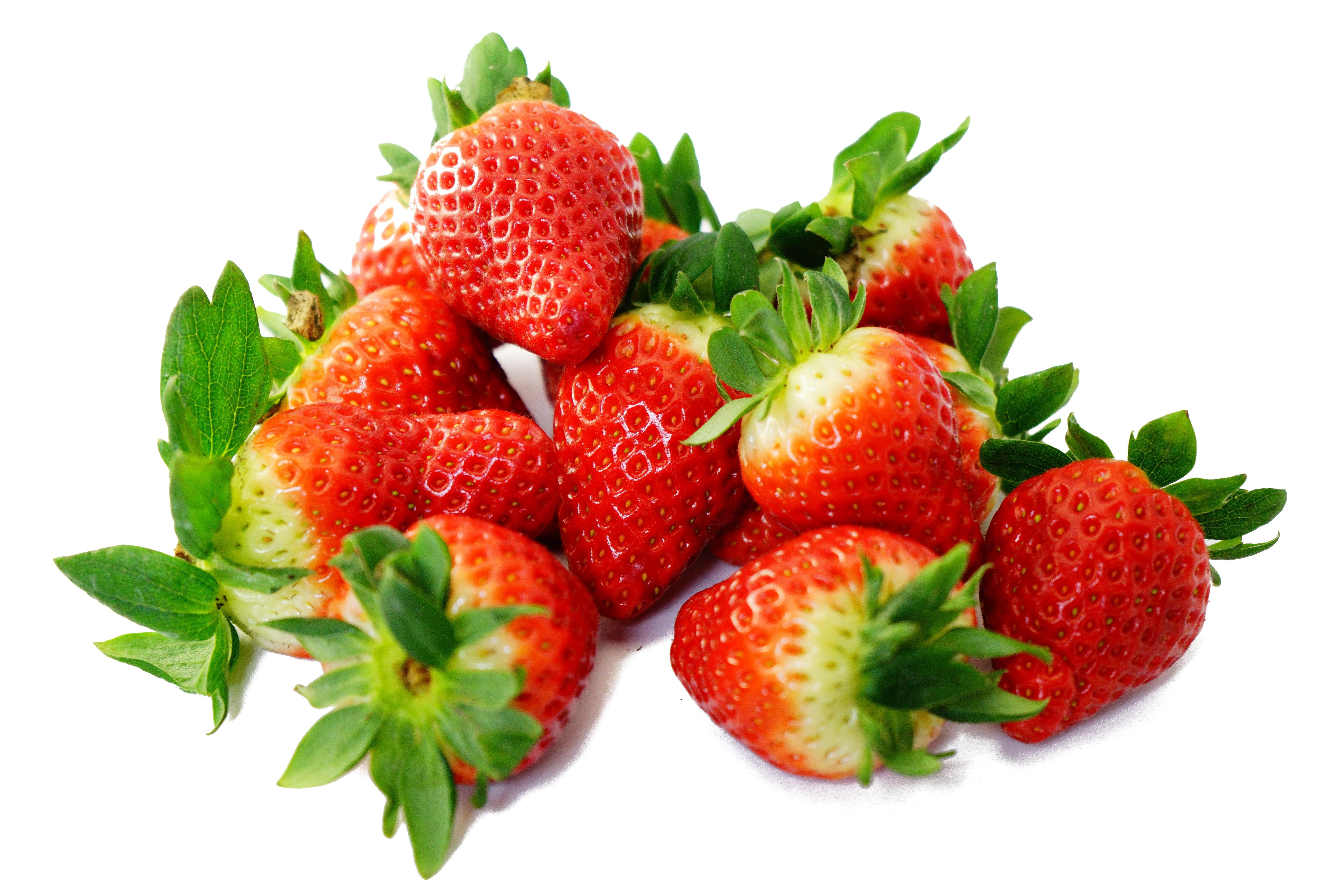
Conventional laboratory testing methods are costly and inefficient. At present, there are relatively mature methods for the detection of pesticide residues in fruits and vegetables, mainly including chromatography, chromatography-mass spectrometry and enzyme inhibition. Among them, chromatography, chromatography-mass spectrometry is the recommended forensic inspection method of the national standard, the test results are accurate, and the high sensitivity can be used as food safety arbitration, but it is limited by the instrument conditions, and the defects with high detection cost and long inspection cycle cannot be widely promoted to the grass-roots level. Enzyme inhibition is a rapid detection method for the detection of organophosphorus and carbamate pesticides, which is currently widely used, but this method can only test these two pesticides and cannot separate specific risk factors for exceeding the standard.
The Raman spectroscopy rapid inspection scheme based on SERS can achieve rapid on-site detection of multiple indicators at a cost of as little as 15 yuan / time. In order to meet the needs of enterprise harvesting and government on-site supervision, and to solve the problem of on-site detection and identification of pesticides, Oceanhood based on surface enhanced Raman spectroscopy technology, it has launched a pesticide residue speed test kit and intelligent Raman spectroscopy inspection equipment, which can be used together to effectively identify pesticide components in fruits and accurately distinguish each risk factor in fruits.
At present, Oceanhood has more than 30 kinds of detection schemes in the field of pesticide residue detection, involving organophosphorus, gaminoate, chlorinated nicotine, sulfonates, imidazoles and other pesticides, and the detection limit can reach ppm level, which can meet the requirements of most pesticide residue national standard testing. Compared with the forensic test method that often takes 6-12h and the testing cost is hundreds to thousands of yuan, the use of Raman spectroscopy to test pesticide residues in fruits and vegetables can reduce the cost of a single test to about 15 yuan, and the detection time is within 30min, which can greatly save the cost of detection.
2.1 Scenario composition
the marine pesticide residue detection scheme is composed of three parts: box Raman spectrometer, cloud identification system, and pesticide residue rapid detection kit. Cabinet Raman spectroscopy is used to collect Raman spectra of samples. Pesticide residues rapid detection kit is used to extract risk factors in fruits and vegetables. The cloud identification system intelligently identifies and determines the risk factors of pesticide residues exceeding the standard.

2.2 Principle
This experiment prepared two kinds of strawberries, first of all, the Raman spectroscopy will be used to detect whether the two commercially available strawberries contain excessive pesticide residues, and then after the test is completed, the two strawberries will be tested separately, compared with the changes in the Raman spectral map of strawberries before and after the addition of pesticides, and the detailed experimental information is shown in the following table.
3.1 Experimental samples
Strawberry samples purchased from nearby supermarkets (tested by the national standard method, and there are no 8 pesticides such as acetamidine in local strawberries that exceed the standard); Purchased from Hema Red Face Strawberry (has been tested by the national standard method, and there are no 8 kinds of pesticides such as acetamidine in the red face strawberry that exceed the standard); Acetamiprid, difenezine, sulfonyl mycopramine, dinosthiophos, octylthion, pyrimidine, carbendazim, iminothion 8 kinds of pesticide standards.
3.2 Protocol
This experiment prepared two kinds of strawberries, first of all, the Raman spectroscopy will be used to detect whether the two commercially available strawberries contain excessive pesticide residues, and then after the test is completed, the two strawberries will be tested separately, compared with the changes in the Raman spectral map of strawberries before and after the addition of pesticides, and the detailed experimental information is shown in the following table.
實(shí)驗(yàn)編號(hào) | 實(shí)驗(yàn)樣品 | 添加農(nóng)藥 | 添加濃度(mg/kg) | 國(guó)標(biāo)限值(mg/kg) |
1 | 超市本地草莓 | -- | -- | -- |
2 | 盒馬紅顏草莓 | -- | -- | -- |
3 | 超市本地草莓 | 啶蟲脒 | 2 | 2 |
4 | 苯醚甲環(huán)唑 | 3 | 3 | |
5 | 磺嘧菌靈 | 0.5 | -- | |
6 | 地蟲硫磷 | 0.01 | 0.01 | |
7 | 盒馬紅顏草莓 | 辛硫磷 | 1 | 0.05 |
8 | 嘧霉胺 | 7 | 7 | |
9 | 多菌靈 | 0.5 | 0.5 | |
10 | 亞胺硫磷 | 1 | -- |
3.3 Method
This experiment uses Oceanhood self-developed Raman pesticide residue speed test cartridge combined with pretreatment machine to pretreat strawberry samples, box Raman spectrometer to collect spectral data, intelligent inspection E+ software for identification.
Strawberry pretreatment process: Weigh 1 g of strawberry sample, add extraction reagent, and fully shake the extraction. After extraction, take out the extract, add the purification reagent, enrich after purification, collect the enrichment test solution for on-the-machine testing, and refer to the instructions for the detailed testing process, such as the Instructions for The Oceanhood raman Pesticide Residue Test Agent.
3.4 Instruments & Consumables
產(chǎn)品 | 型號(hào) | 數(shù)量 |
箱體式拉曼光譜儀 | IRS1000 | 1 |
前處理一體箱 | RFSC-1000 | 1 |
比色皿 | CVT-721 | 10 |
農(nóng)殘拉曼快速檢測(cè)試劑盒 | / | 2 |
3.5 Results
This experiment consisted of 10 groups, of which in experiment 1 and experiment 2, the local strawberries purchased from nearby supermarkets and the red strawberries purchased from the box horse were tested respectively, and the test results were the same as those of the national standard, and the 8 pesticides of acetamidine, phenylethicazole, sulfonyl mycoplasm, thiophos, octyl thiophos, pyrimidine, carbendazim, and iminothion in the local strawberries and box horse red face strawberries did not exceed the standard.
In experiments 3, 4, 5 and 6, according to the national standard limit, acetamidine, phenoxymethazole, sulfonyl mycoplastym, and thiophosphine were added to the local strawberries for testing, and judged whether the drug was detected according to the raman characteristic displacement of the four pesticides. The Raman signature displacements of four pesticides can be clearly found from the test map, and all four pesticides can be detected.

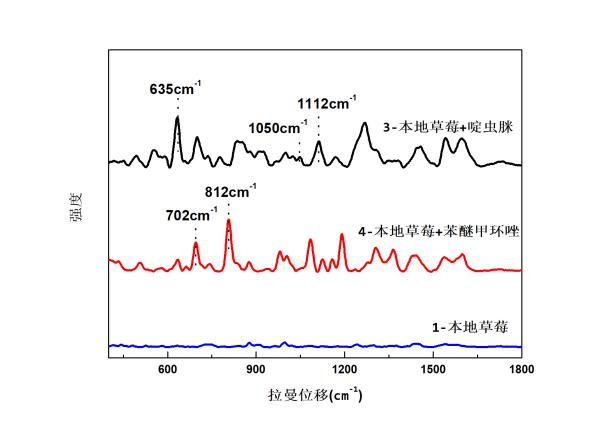
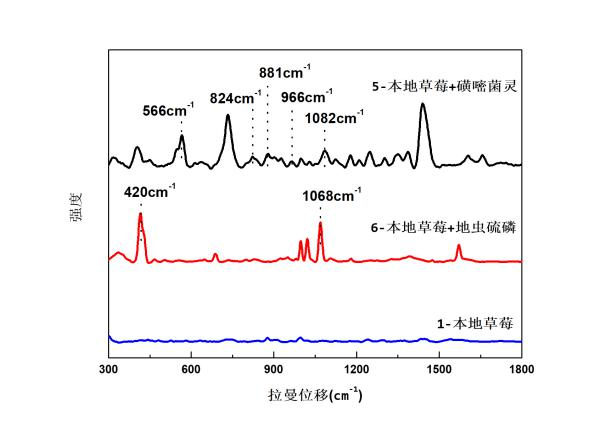
In experiments 7, 8, 9 and 10, octylthion, pyrimidine, carbendazim, iminothion were added to the box horse red face strawberry according to the national standard limit value for testing, the same according to the four pesticide Raman characteristic displacements for determination, 4 groups of experimental test maps can be clearly found in the Raman characteristic displacement of four pesticides, four pesticides can be detected.
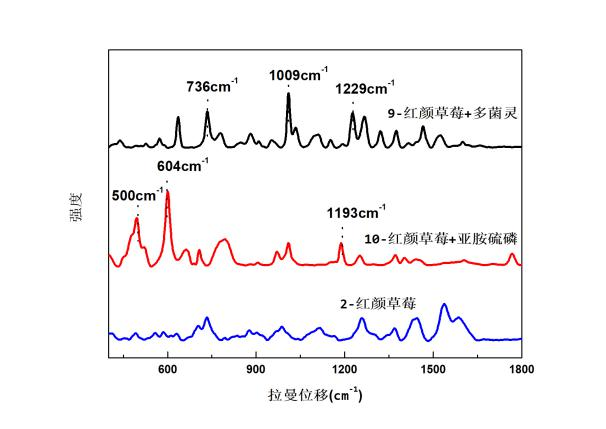
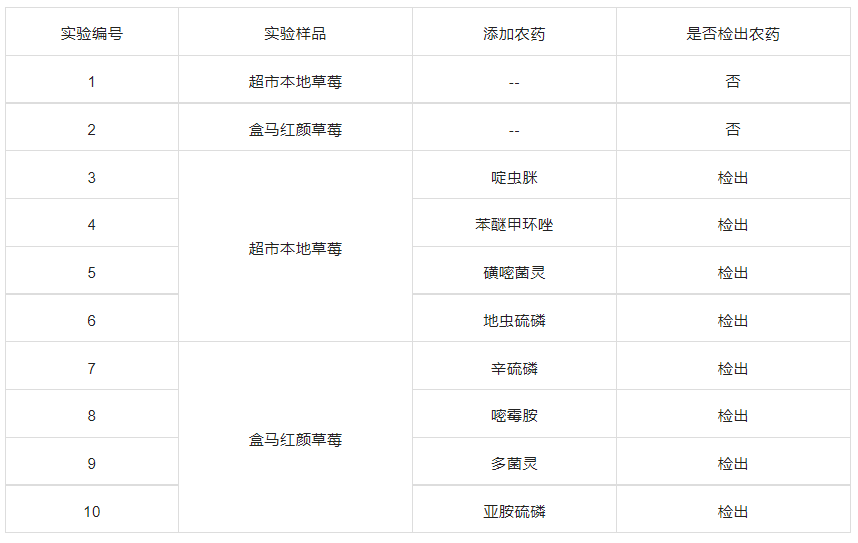
In this strawberry pesticide test experiment, the use of Oceanhood self-developed pesticide residue kit was used to add apyrimidine, difenezecycrazole, sulfonyl mycopramine, ground worm thiophos, octyl thiophos, pyrimidine, carbendazim, iminothion of strawberries were tested, and the results showed that the Ruhai self-developed pesticide residue kit could detect pesticides in strawberries that exceeded the national standard limit. In addition, the experimental results also show that the quality of the two commercially available strawberries is qualified, there is no pesticide exceeding the standard, and the small partners can eat it with confidence!

<rt id="yqwyi"></rt>
